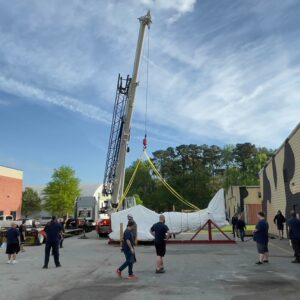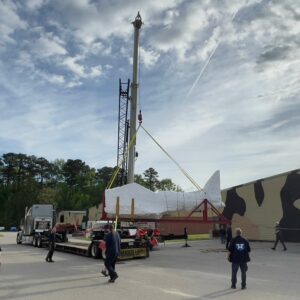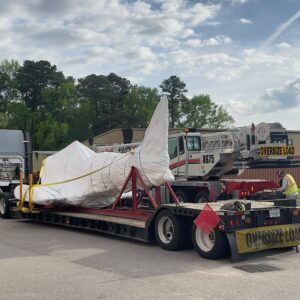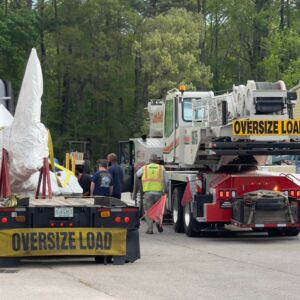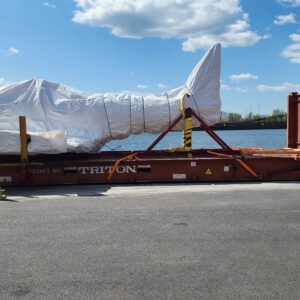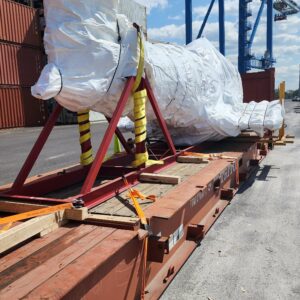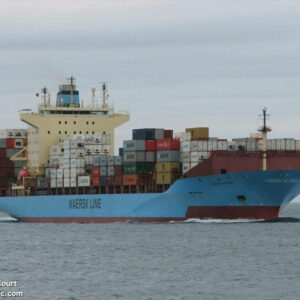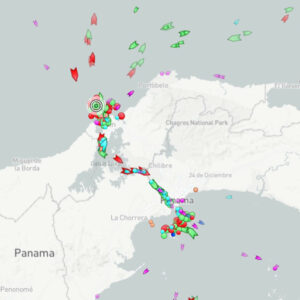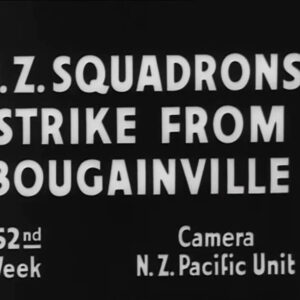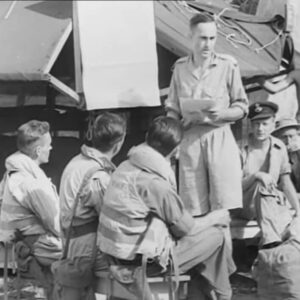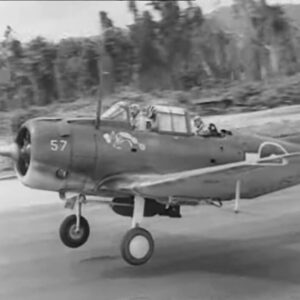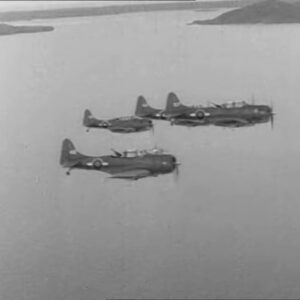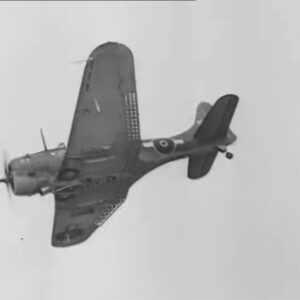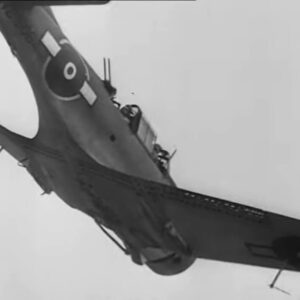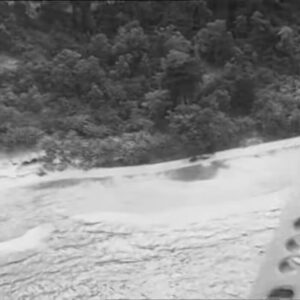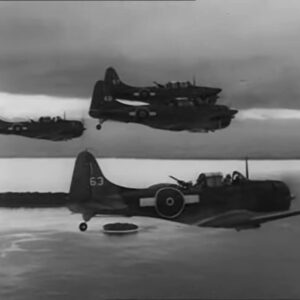With its departure from the USA being complicated somewhat by the global logistics situation, we are pleased to announce that our Dauntless has now boarded the container ship Olivia Maersk for the trip to Ardmore, New Zealand, where Pioneer Aero Ltd. will lead the SBD's restoration. A secondary workshop, Aero Trader, of Chino, California, has undertaken the wing rebuild, and with that now being completed, their efforts will focus now on the dive brakes and tail surfaces.
The SBD's voyage to New Zealand is estimated to take about a month, with arrival set to occur on or about May 28th, 2023. The journey began aboard a flatbed truck from the Museum to the Port of Philadelphia, Pennsylvania, where the Dauntless underwent preparations for international transport. Olivia Maersk put to sea in the early morning hours of April 26th. At time of posting, the ship was about to enter the Panama Canal - no doubt, we are all now wondering when it was, exactly, that a Dauntless last crossed the Pacific Ocean aboard a ship…
With respect to the restoration, a question we are often asked is, 'Why don’t we just do it here?' Well, the truth is that we don’t have the space! At the Museum currently, the maintenance demands of our active aircraft fleet mean that we simply can’t lock-down the floor space which a project like the Dauntless needs for the length of time it would require. The result is that we must collaborate with outside shops which specialize in this kind of work. The question of which particular shop to work with comes up regularly as well. There are always a number of considerations when it comes to such a decision, of course; some of the most important being Cost (including Shop Rate), Expertise (Have they done this sort of airplane before?) and Timeline (Can they start right away, or is their shop floor full like ours?). Opting for a workshop in New Zealand should in no way suggest that we believe this endeavor couldn’t be handled in the United States. Instead it says that, when we weighed their proposal against those we received from stateside shops, the ‘Kiwis’ came in strong!
Such decisions are not undertaken lightly either, as there is always a risk to an airframe in transit, particularly when one considers the vast distances involved - not to mention the unpredictability of ocean travel. But this choice was made a little easier once we understood the enthusiasm which New Zealanders have for the type as well! Indeed a number of SBDs once flew from Seagrove Aerodrome, a former military base just a few miles from Pioneer Aero's base in Ardmore. Furthermore, the Royal New Zealand Air Force (RNZAF) flew the Dauntless in the South Pacific during WWII as well! No.25 Squadron RNZAF operated the type from Piva Airfield on Bougainville, attacking Imperial Japanese forces in the region, including the hardened fortress of Rabaul.
With several of their squadrons initially expected to field the Dauntless (Nos. 25, 26, 27 and 28), the RNZAF took delivery of nine ex-USMC aircraft, still in their American markings, to begin training air crews. These aircraft are regularly described as being war-weary, and they required extensive maintenance (and cannibalization) just to get some of them in the air. Cries for serviceable airplanes were eventually answered; the number of SBDs in service in New Zealand grew steadily through 1943. Only No.25 Squadron would see combat service with the type however, with 29 of their 32 assigned strikes taking place during the 8 week period of their Operational Tour in Bougainville.
During their time as part of COMAIRSOLS (Commander Air Solomons) the ‘Kiwis’ racked up 530 sorties which involved some 1,750 flying hours. Their near-daily missions saw them drop 280 tons of bombs, with the loss of two aircraft to enemy action and three more to other causes. Before the journey home to New Zealand, where many of their pilots eventually transitioned to the Corsair, there was the matter of returning 'borrowed' SBD’s to the Marines. The receiving officer was surprised to note that the ‘Kiwis,’ despite their intensive operational tempo, had handed him airplanes which seemed to be in as-new condition. This was a testament to the skill and dedication of the RNZAF maintenance crews, who serviced these SBDs with few spares and often in extreme conditions.
And we certainly can’t wait to get our SBD back from the skilled hands of those New Zealanders who share our passion for preserving aviation history. Hopefully, having the airplane 'down under' for a period will give our friends in the Southern Hemisphere a chance to see and enjoy it, while also helping to shed some light on a less well known detail of RNZAF history for the rest of us!

